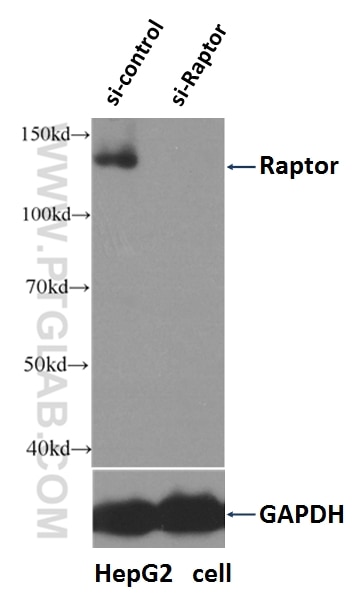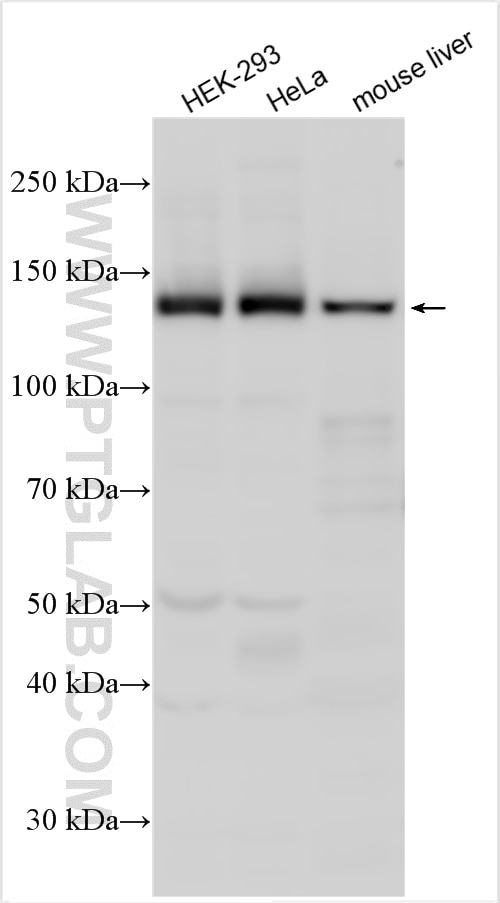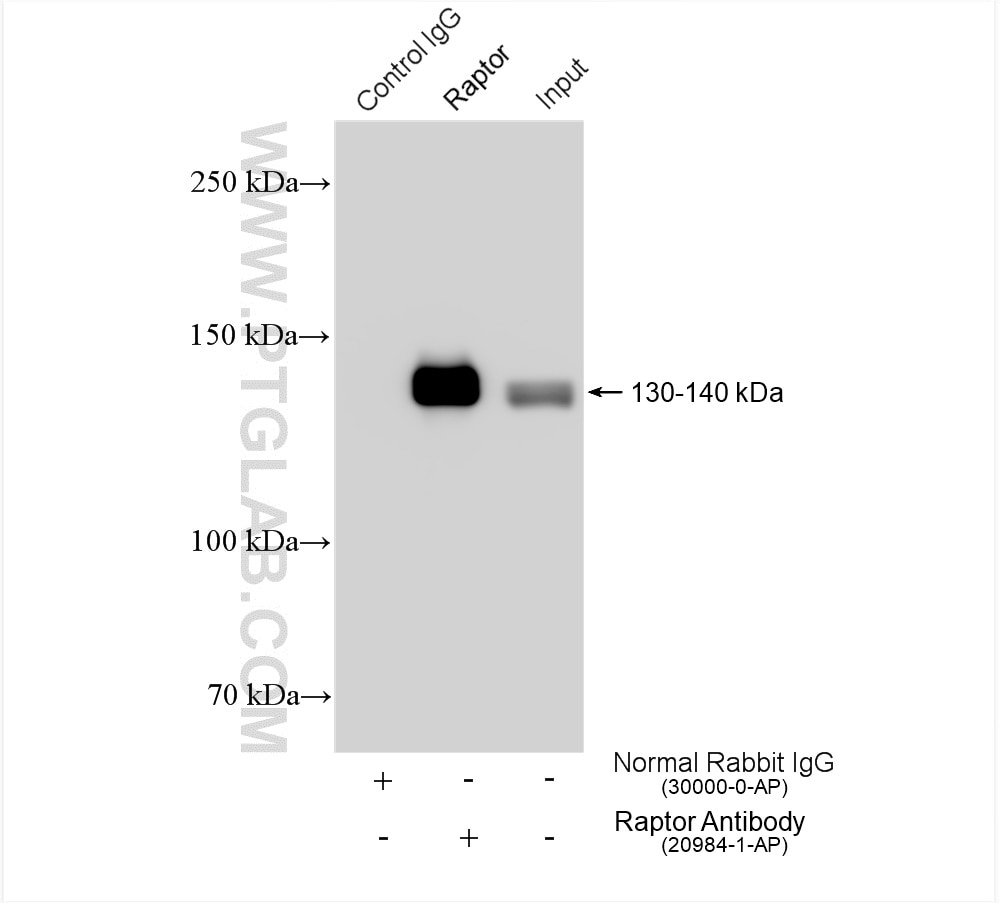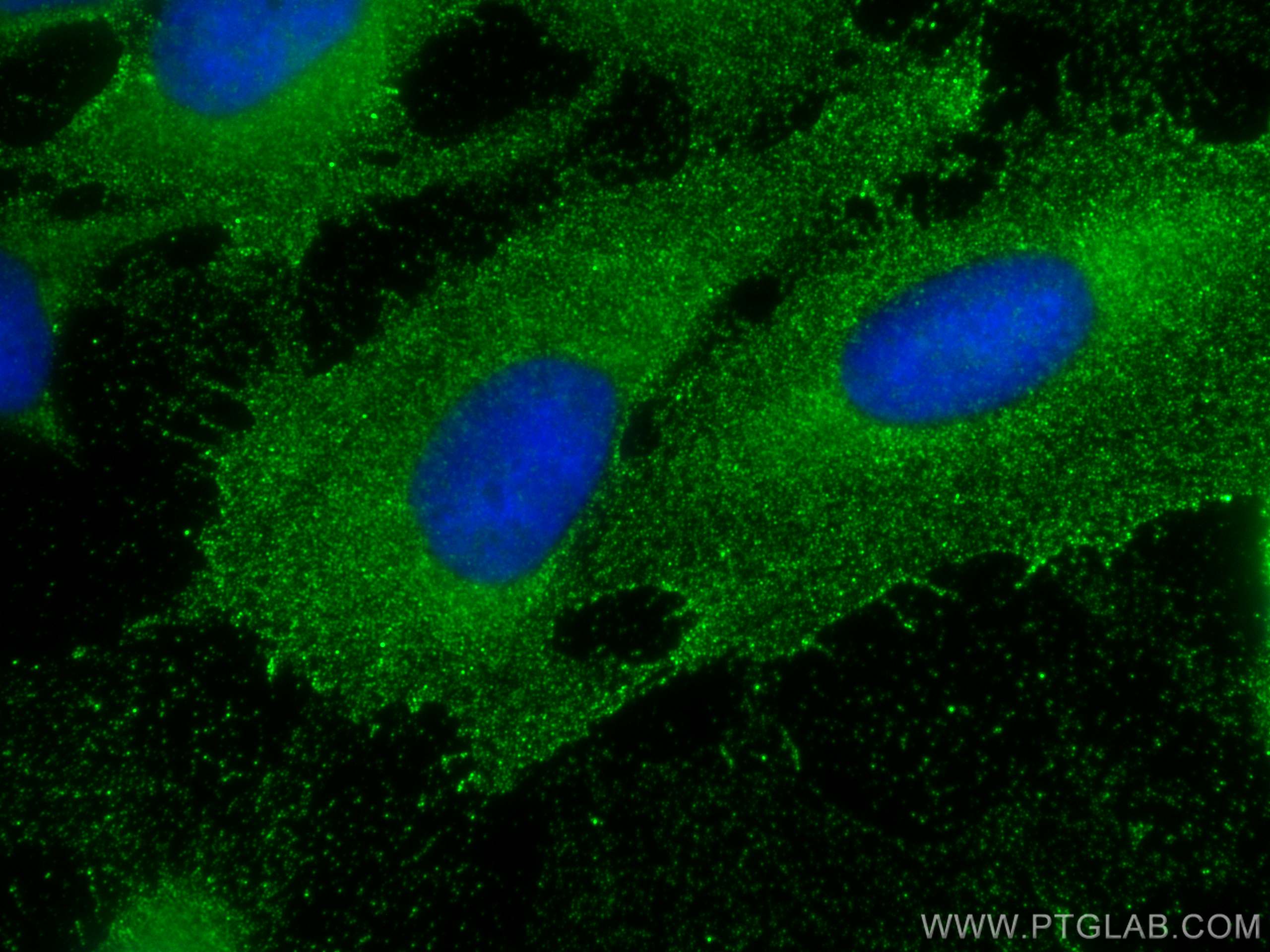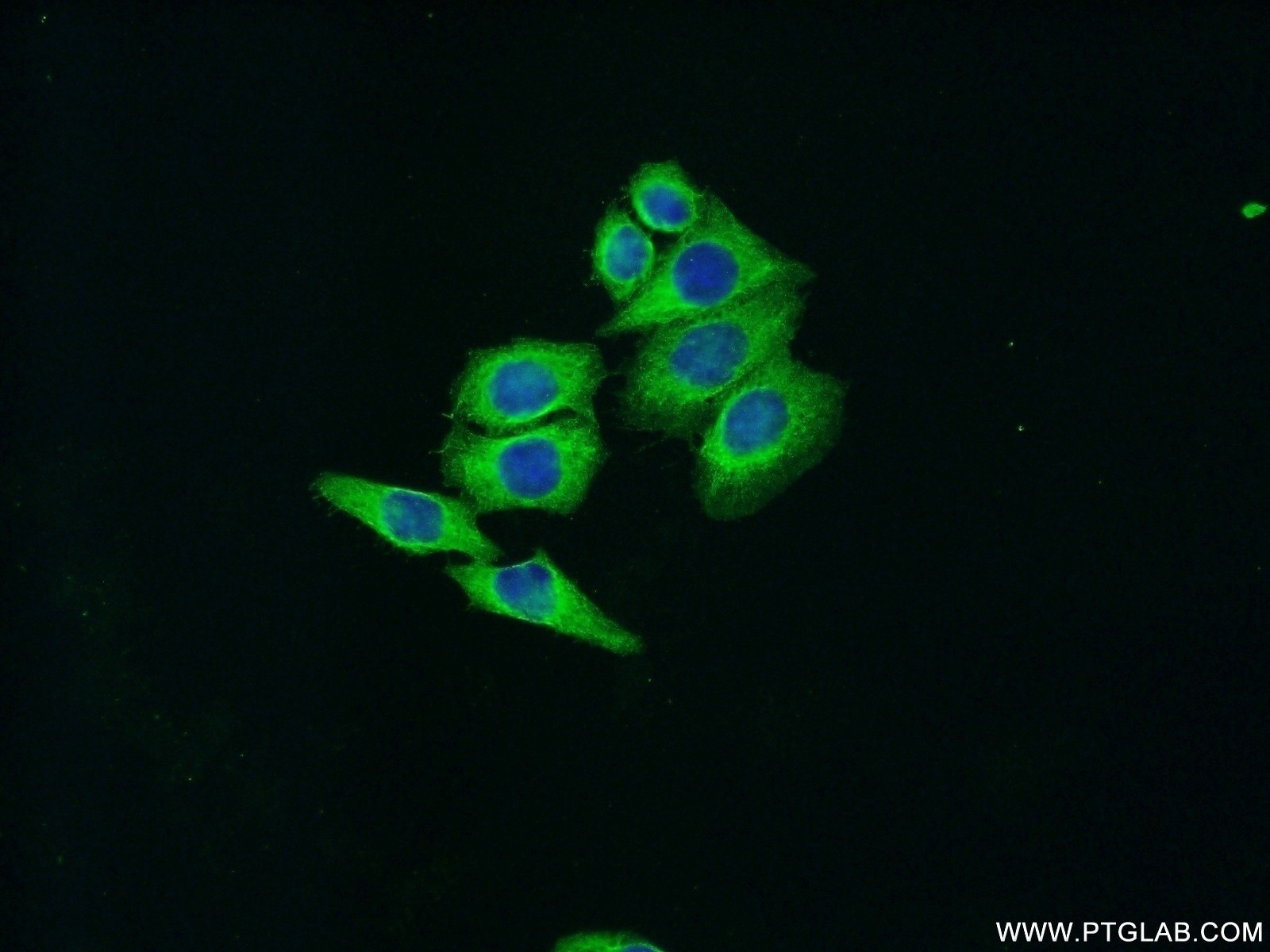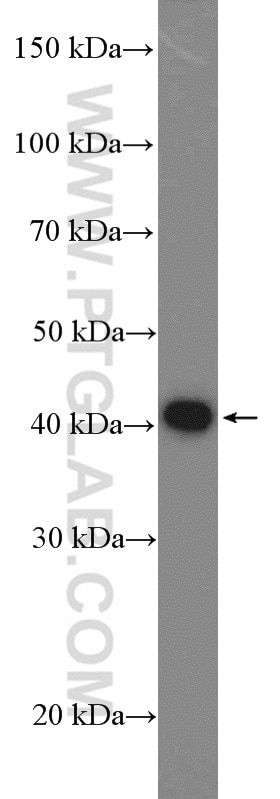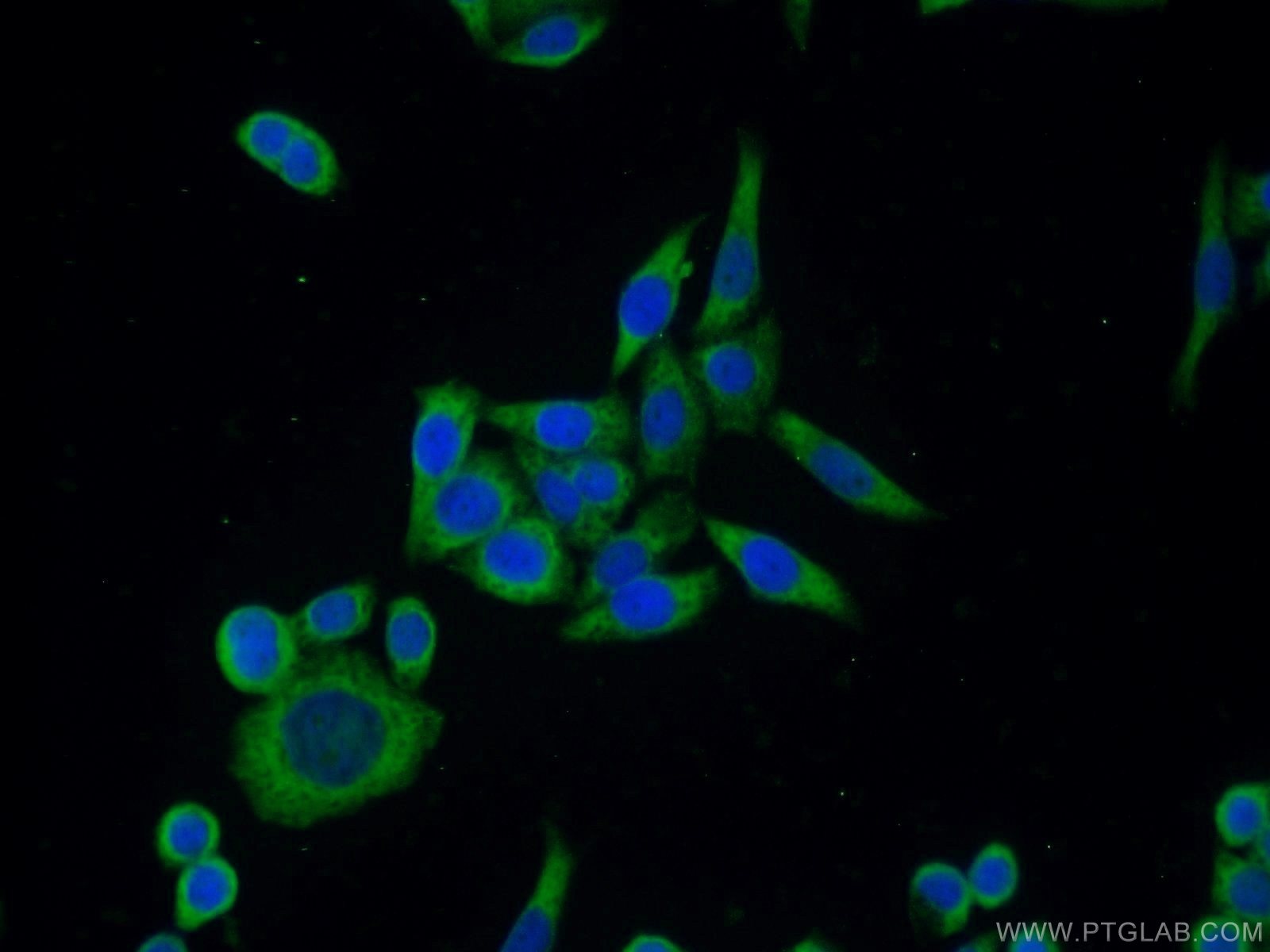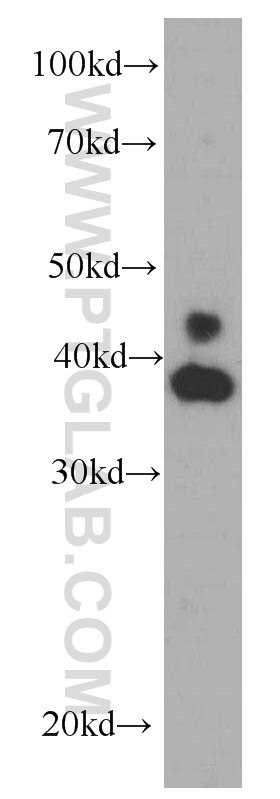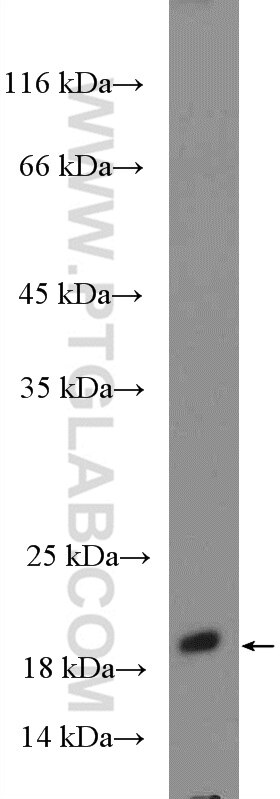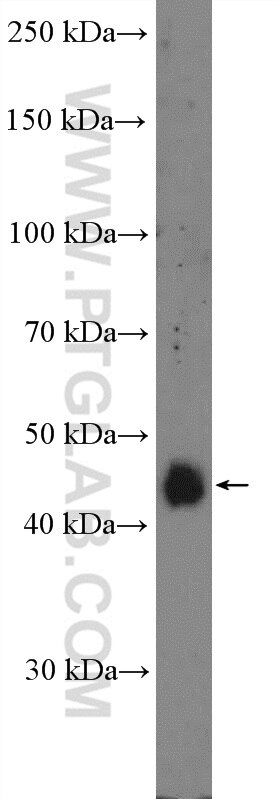- Phare
- Validé par KD/KO
Anticorps Polyclonal de lapin anti-Raptor
Raptor Polyclonal Antibody for WB, IP, IF, ELISA
Hôte / Isotype
Lapin / IgG
Réactivité testée
Humain, souris et plus (2)
Applications
WB, IHC, IF/ICC, IP, ELISA, PLA
Conjugaison
Non conjugué
N° de cat : 20984-1-AP
Synonymes
Galerie de données de validation
Applications testées
| Résultats positifs en WB | cellules HEK-293, cellules HeLa, cellules HepG2, tissu hépatique de souris |
| Résultats positifs en IP | cellules HEK-293, |
| Résultats positifs en IF/ICC | cellules U2OS, |
Dilution recommandée
| Application | Dilution |
|---|---|
| Western Blot (WB) | WB : 1:2000-1:12000 |
| Immunoprécipitation (IP) | IP : 0.5-4.0 ug for 1.0-3.0 mg of total protein lysate |
| Immunofluorescence (IF)/ICC | IF/ICC : 1:50-1:500 |
| It is recommended that this reagent should be titrated in each testing system to obtain optimal results. | |
| Sample-dependent, check data in validation data gallery | |
Applications publiées
| KD/KO | See 1 publications below |
| WB | See 34 publications below |
| IHC | See 2 publications below |
| IF | See 9 publications below |
| IP | See 3 publications below |
Informations sur le produit
20984-1-AP cible Raptor dans les applications de WB, IHC, IF/ICC, IP, ELISA, PLA et montre une réactivité avec des échantillons Humain, souris
| Réactivité | Humain, souris |
| Réactivité citée | rat, Humain, Lapin, souris |
| Hôte / Isotype | Lapin / IgG |
| Clonalité | Polyclonal |
| Type | Anticorps |
| Immunogène | Peptide |
| Nom complet | raptor |
| Masse moléculaire calculée | 149 kDa |
| Poids moléculaire observé | 130-150 kDa |
| Numéro d’acquisition GenBank | NM_020761 |
| Symbole du gène | Raptor |
| Identification du gène (NCBI) | 57521 |
| Conjugaison | Non conjugué |
| Forme | Liquide |
| Méthode de purification | Purification par affinité contre l'antigène |
| Tampon de stockage | PBS avec azoture de sodium à 0,02 % et glycérol à 50 % pH 7,3 |
| Conditions de stockage | Stocker à -20°C. Stable pendant un an après l'expédition. L'aliquotage n'est pas nécessaire pour le stockage à -20oC Les 20ul contiennent 0,1% de BSA. |
Informations générales
RPTOR, also named as KIAA1303 and RAPTOR Belongs to the WD repeat RAPTOR family. It is involved in the control of the mammalian target of rapamycin complex 1 (mTORC1) activity which regulates cell growth and survival, and autophagy in response to nutrient and hormonal signals; functions as a scaffold for recruiting mTORC1 substrates. mTORC1 is activated in response to growth factors or amino-acids. Amino-acid-signaling to mTORC1 is mediated by Rag GTPases, which cause amino-acid-induced relocalization of mTOR within the endomembrane system. Activated mTORC1 up-regulates protein synthesis by phosphorylating key regulators of mRNA translation and ribosome synthesis. mTORC1 phosphorylates EIF4EBP1 and releases it from inhibiting the elongation initiation factor 4E (eiF4E). mTORC1 phosphorylates and activates S6K1 at 'Thr-389', which then promotes protein synthesis by phosphorylating PDCD4 and targeting it for degradation. The antibody is specific to RPTOR.
Protocole
| Product Specific Protocols | |
|---|---|
| WB protocol for Raptor antibody 20984-1-AP | Download protocol |
| IF protocol for Raptor antibody 20984-1-AP | Download protocol |
| IP protocol for Raptor antibody 20984-1-AP | Download protocol |
| Standard Protocols | |
|---|---|
| Click here to view our Standard Protocols |
Publications
| Species | Application | Title |
|---|---|---|
Mol Cell Acetyl-CoA Derived from Hepatic Peroxisomal β-Oxidation Inhibits Autophagy and Promotes Steatosis via mTORC1 Activation. | ||
Nat Commun Location-specific inhibition of Akt reveals regulation of mTORC1 activity in the nucleus. | ||
Nat Commun N7-methylguanosine tRNA modification promotes esophageal squamous cell carcinoma tumorigenesis via the RPTOR/ULK1/autophagy axis. | ||
Aging (Albany NY) Interleukin 6 promotes BMP9-induced osteoblastic differentiation through Stat3/mTORC1 in mouse embryonic fibroblasts | ||
Cell Death Differ NUMB facilitates autophagy initiation through targeting SCFβ-TrCP2 complex. |
